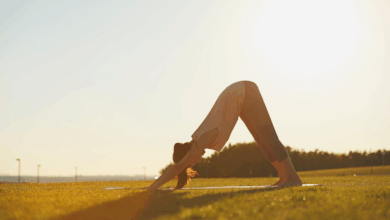11 Essentials for your Outdoor Go-bag

While the wildlife in our neighborhoods, gardens, city parks, and backyards is close and hand and can be fascinating, every nature enthusiast eventually wants to go further afield. Venturing out into new natural places can bring you into contact with new habitats, plants, animals, and much more. Of course, when we stray far from the conveniences of home, it’s worth being prepared. That includes preparation for emergencies in more isolated or potentially risky areas, everyday concerns like sunscreen and water, and items that can enhance your nature experience, like binoculars. Even naturalist and writer Henry David Thoreau, famous for a “no-frills” lifestyle, would pack snacks, a notebook, and a magnifying glass when he left home on one of his rambles.
Read more: Common backyard birds of Eastern North America
My answer this has always been my naturalist to-go bag, our outdoor bag: I keep a spare backpack handy with all of my usual gear for enjoying time outside, so when an opportunity arises I can just grab it and head out. Taking the thinking out of preparation for outdoor recreation will make it much easier for you to get more outside time, regardless of how you do it. What you put in your outdoor go-bag, or even what kind of bag you have (Thoreau often mentioned his old knapsack) is your choice, but having one set up will go a long way.
Read more: How to become more outdoorsy
In this Outdoor Tips post, I’ll cover some of the most common essentials for your outdoor go-bag, and extras that you might consider depending on what you get up to.

The Essentials
Ultimately, I want my nature go-bag to have what I need to sprint out the door if a rare bird shows up in a natural area two counties over, or if I wake up early on a weekend and want to clear my mind with a longer hike. I shouldn’t have to rummage through my closet or garage trying to find the right water bottle. This first list of items are what I call my essentials, which are useful for pretty much any longer excursion outdoors, even if it’s relatively close to home. Above all, essentials let you spend more time outside, making you less constrained and giving you more freedom to roam, enjoy a sit-spot, or draw that neat flower you came across.
Read more: How to get more from your time outdoors
1. Water
All living things need water, and depending on your level of activity and the weather outside, you could end up needing a lot. Outdoor hobbies involve different amounts of activity (read: sweating!), so your needs may vary substantially based on the outing. To be safe, I typically plan as though I were going on a moderately strenuous hike, and then scale back from there. Here are some rules of thumb you’ll hear from experienced hikers:
- At least 16oz (~0.5L) per adult per hour
- Add an additional 8-10oz (0.25-0.3L) per hour if:
- There will be hot weather during the outing
- You’ll be at high elevation
- There will be athletic activity (e.g., biking, climbing, advanced terrain)
Since most water bottles measure in liters and math gives me a headache, I usually shoot for something like 1.5 to 2.5 liters for an all-day outing, leaning toward more if it’s hot out or if I’ll be running around more. During a strenuous hike in the Alps last year, I packed more than 3.5 liters per day and went through it easily, but that combined all of the factors I mentioned above.
Choosing the Right Water Bottle
There are loads of options available for water bottles, and a lot of room for preference. Generally, my biggest factors are durability and weight. It’s great to have durable bottles so they can put up with some punishment if you end up dropping them or your bag often. I unfortunately do this a lot when I see some really exciting wildlife and can’t wait to put it down slowly. Weight becomes an issue if you’re going to be hiking long distances or carrying lots of other stuff, since water is already quite heavy and you don’t want to put too much strain on your body.
For your basic, run-of-the-mill screw-top water bottle, nothing beats a good old-fashioned Nalgene Water Bottle. These trusty bottles don’t weigh much and can take a serious beating. With so few moving parts and no bells & whistles, they’re easy to clean and not likely to break down on you. They come in a variety of colors, and it’s fun to cover them in your sticker collection.
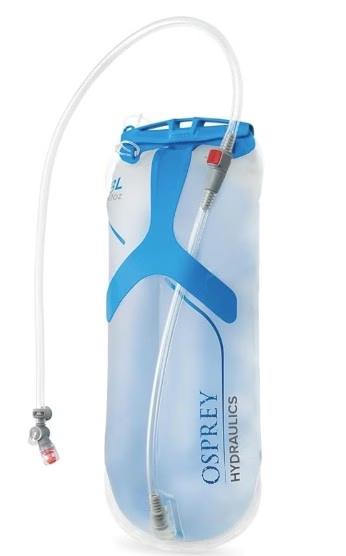
Osprey Hydraulics Backpack Water Reservoir with Bite Valve – BPA-Free
A durable and flexible reservoir for comfortably carrying water longer distances in a backpack. I have been using a 2L version from this brand for more than 2 years and it has been excellent.
- Leakproof Slide-Seal Opening
- Rigid & Stable Backer Plate
- Slim, Slosh-Free Profile
- Magnetic Bite Valve & Hose
- BPA-Free, Pack-Compatible Design
If you make an online purchase using a link from this site, the vendor provides a small commission which I use to support the blog (at no extra cost to you). Thank you for your support!
More recently, my more hardcore backpacking and hiking friends have introduced me to backpack based water reservoirs like Camelbak and Osprey. These are light, flexible, durable “bags” of water that fit into a special compartment in most modern backpacks. You can access the water through a hose with a mouthpiece on the end, which means you can sip as you walk without rummaging through your pack for a water bottle. These also typically come in larger sizes and can carry more water more comfortably. I strongly recommend for anyone doing longer outings.
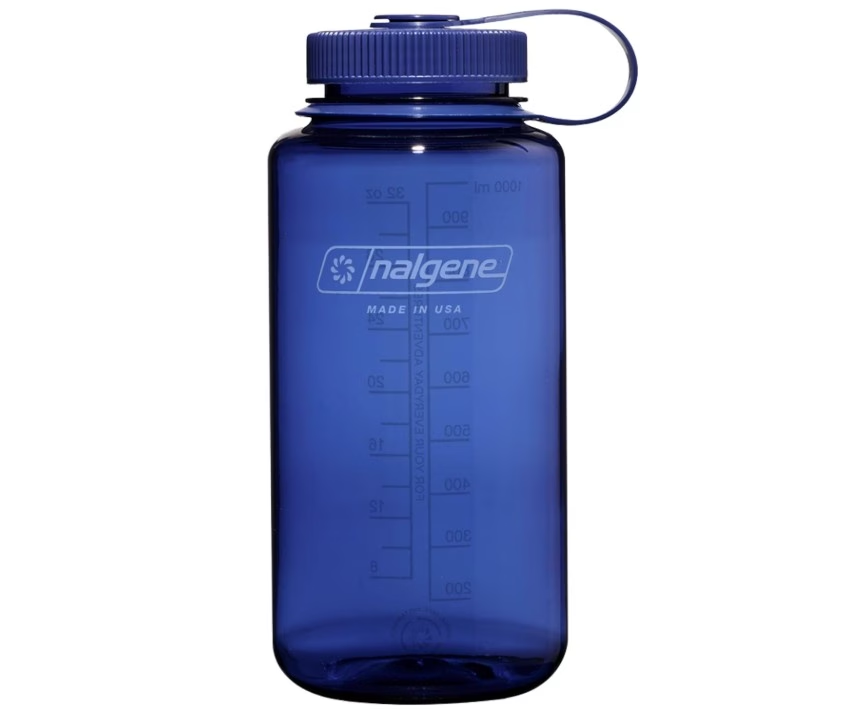
Nalgene Sustain Tritan BPA-Free Water Bottle
Every outdoorsperson’s favorite classic waterbottle. No-frills, durable, and a great canvas for stickers.
If you make an online purchase using a link from this site, the vendor provides a small commission which I use to support the blog (at no extra cost to you). Thank you for your support!
Naturalist Pro-tip: If you’re driving to your destination or have a “home base” during your visit where you can leave things, always pack extra water and leave it where you can find it when you return. Since most nature destinations in North America involve driving, I always leave several extra water bottles in my go-bag, and then keep them in the car while I’m out and about. When I return from my hike or nature walk, there’s extra water available for me or someone else if needed. This is a smart insurance policy that won’t weigh you down on the trail.
My favorite discovery for backup car-water has been WaterStorageCubes, which are convenient and foldable, reusable, BPA-free containers for holding drinking water. While they’re way too big for hiking, one of these can fit easily in your car or wait for you at a picnic area while you’re on the trail or lost on a bug-hunt. Then, you’ve got plenty of water to refill your bottles when you’re done. I first saw folks using these on a hike several years ago and was blown away by how useful they were. If you’d rather keep it simple, several backup water bottles will also do just fine.
Sun Protection
Regardless of your skin tone, ultraviolet radiation from the sun is healthy only in relatively small doses. If you’re going to spend prolonged periods of time outside, or be outside on the regular, some form of sun protection is a great idea. Importantly, the UV-index is the important thing to check before going outside, not the temperature or weather. You can get plenty of exposure to UV even through clouds! If you’ll be in snowy or icy areas, or near large bodies of water, the reflection from the sun can increase your exposure. For example, I’m really careful about putting sunscreen on my nose before long Winter hikes, even when it’s well below freezing!
Here are some easy-to-pack forms of sun protection:
- Sunscreen
- Sunglasses
- A hat with a brim
- A breathable long-sleeved shirt
2. Sunscreen
Sunscreen is a no-brainer. There are plenty of brands and types of sunscreen, from mineral to chemical, that have different textures, smells, and levels of protection. Even if you “don’t like wearing sunscreen”, there are plenty of options available that are low-maintenance and don’t give you a greasy or “at the beach” feeling. If you’ll be swimming in aquatic environments, please consider oxybenzone-free sunscreens to avoid contributing harmful chemicals to the local ecosystem. Luckily, there are plenty of wildlife-friendly or “reef-safe” sunscreens out there, too.
Gulo’s Pick: My go-to sunscreen has been Neutrogena’s Ultra Sheer Dry Touch sunscreens, which have a variety of SPF options, aren’t too expensive, and feel breathable and non-greasy on your skin.
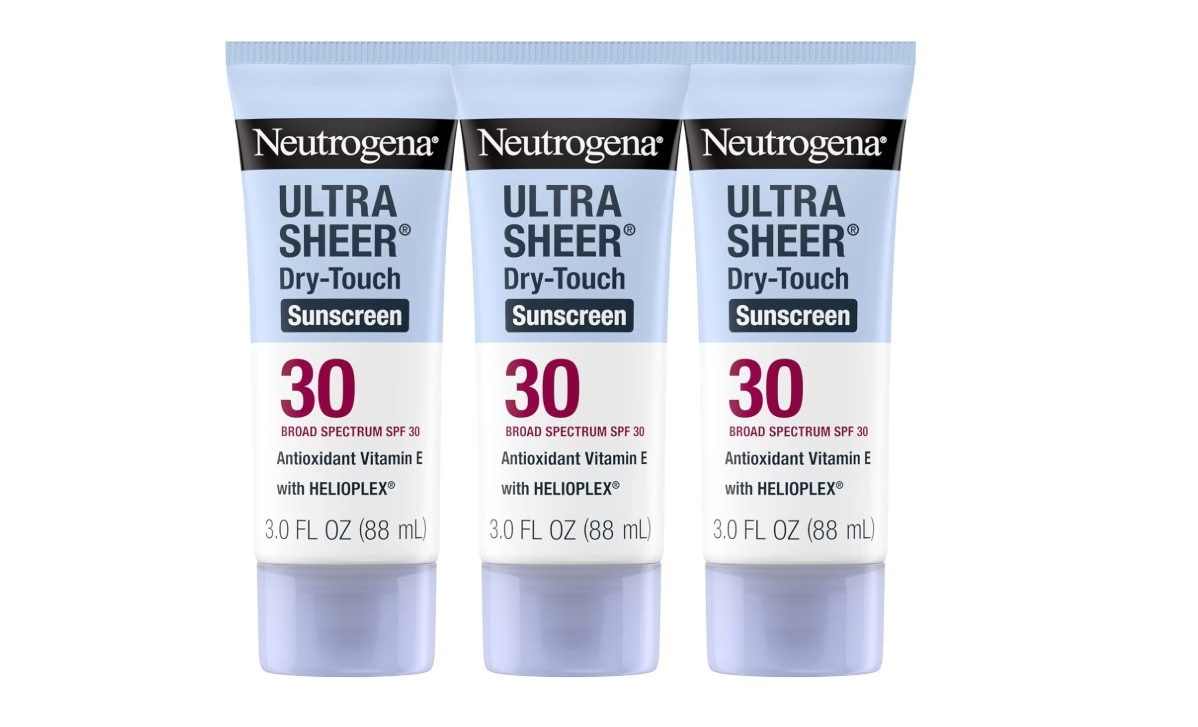
Neutrogena Ultra Sheer Dry-Touch Sunscreen for Face & Body, Helioplex SPF 30 Broad Spectrum UVA/UVB
My favorite non-greasy sunscreen for everyday outdoor excursions.
Check Price
If you make an online purchase using a link from this site, the vendor provides a small commission which I use to support the blog (at no extra cost to you). Thank you for your support!
If I’m heading to the beach or the ocean to do some snorkeling or swimming, I shoot for reef-safe sunscreens like Blue Lizard which have served me well from surfing to surveying tropical coral reefs.
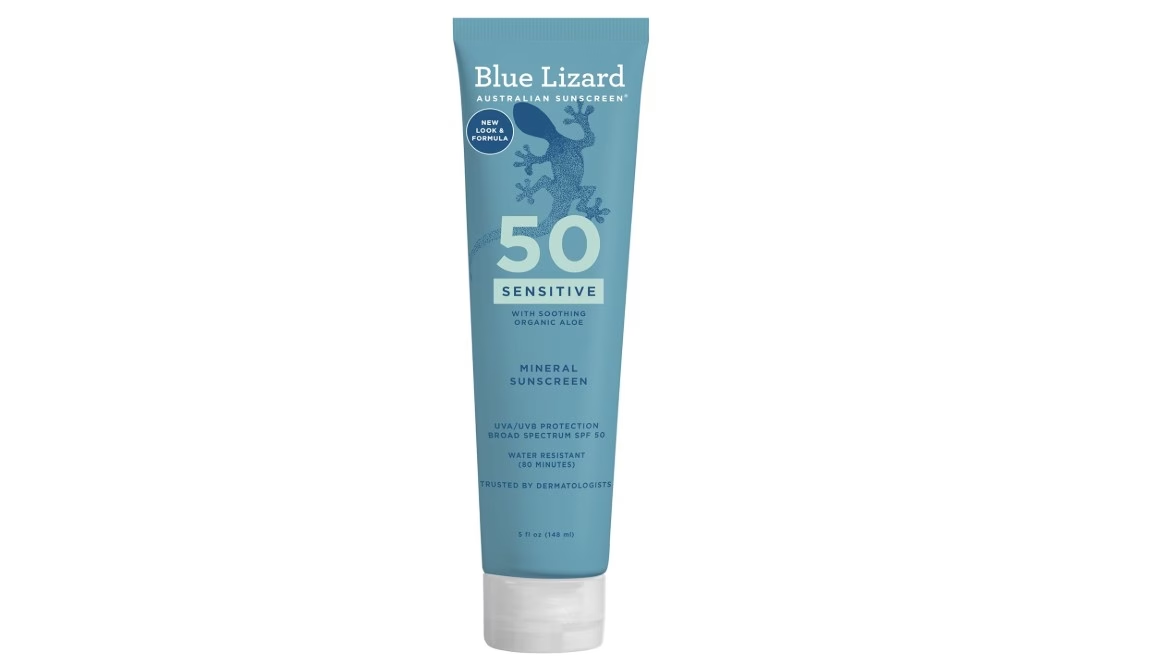
BLUE LIZARD Sensitive Mineral Sunscreen with Zinc Oxide
My favorite sunscreen for aquatic nature adventures. Protect your skin from hours of sun exposure while avoiding harm to local wildlife!
Check Price
If you make an online purchase using a link from this site, the vendor provides a small commission which I use to support the blog (at no extra cost to you). Thank you for your support!
3. Sunglasses
Your eyes are vitally important organs that are especially sensitive to prolonged sun exposure. If you’re spending a lot of time in open habitats or areas with a lot of reflective surfaces (for example, snowpack, white sand or rocks, water), then you’ll want to be careful about shielding your eyes as best as possible. If you’re interested in aquatic wildlife, polarized sunglasses are also ideal for reducing glare and getting a better look at what’s down below. As someone with pretty light-sensitive eyes, I never go out without a backup pair of sunglasses handy.
Gulo’s Pick: Regardless of style, my favorite sunglasses (and I go through a lot of them!) in the last 15 years as a field biologist and naturalist have been Shady Rays, which are a good balance of price and quality. While there are much cheaper sunglasses out there, they often break easily and need to be replaced every few months with heavy use. My first pair of Shady Rays is starting to show some wear after 3 years of intense use, which is the best longevity I’ve had yet.
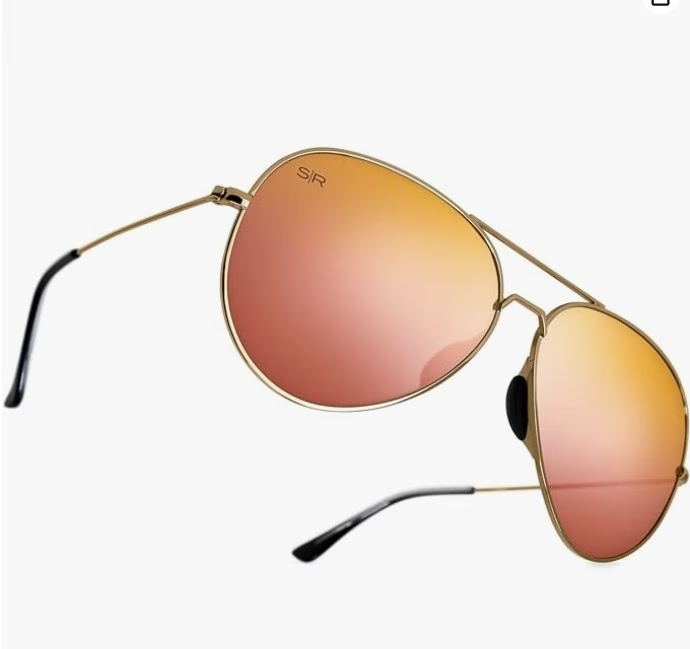
Shady Rays Tangle Free Aviator Sunglasses
My favorite middle-of-the-road sunglasses. They’ve provided great protection while feeling comfortable and not breaking the bank.
Check Price
If you make an online purchase using a link from this site, the vendor provides a small commission which I use to support the blog (at no extra cost to you). Thank you for your support!
Naturalist Pro Tip: Be careful with your sunglasses! While you’re bopping around with a go-bag full of important gear, your sunglasses might take a beating if they aren’t on your head. I picked up a hard-sided carrying case for my sunglasses and it has kept them intact without adding much weight to my backpack.
4. Hats
A cheap and easy way to get serious sun protection for your yead is just to wear a hat. In forested or shady environments this isn’t necessarily an essential, but in high-elevation and open areas it’s a big plus. It will also help keep you cool if the sun is beating down, help your sunglasses in protecting your eyes, and can act as a bit of a buffer between you and any bugs that might buzz in your ear. I always wear a wide-brimmed hat if I’ll be in grasslands, meadows, or desert environments, and I’ll bring one with me if I anticipate hiking to an exposed peak. When I teach tropical ecology classes in Costa Rica, my hat also helps a lot in keeping bugs (including some potentially nasty ones!) out of my shirt or hair.
There are plenty of styles of outdoor hats in the world, and almost all of them look a bit goofy, but they’re super useful. You might consider factors like:
- Weight
- Stowability (can you pack it?)
- Material (can it get wet? Will it dry or deform?)
- Washability (if it gets gross, can you clean it?)
Gulo’s Pick: Although they aren’t as packable, I prefer more solid hats that can maintain their brim over time, and which can look more “Indiana Jones” than “Nerd Stuck Outside”.
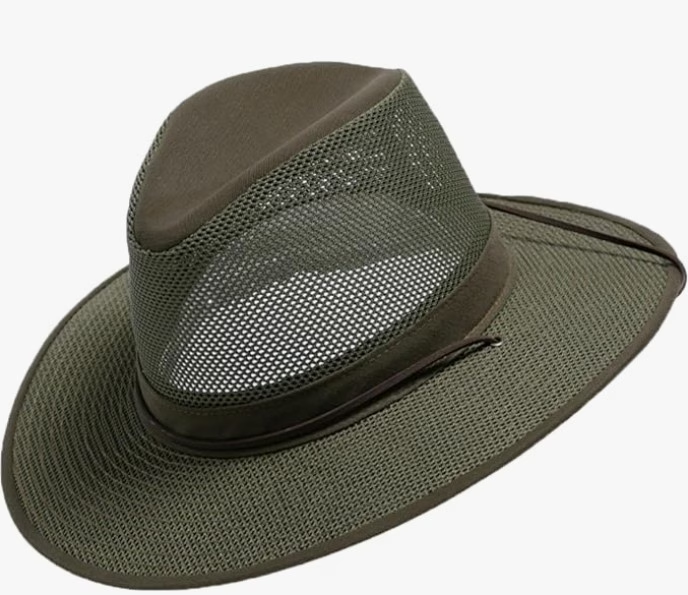
Henschel Aussie Mesh Breezer Hat
A solid, durable hat for outdoor use.
Check Price
If you make an online purchase using a link from this site, the vendor provides a small commission which I use to support the blog (at no extra cost to you). Thank you for your support!
Alternatively, it never hurts to have a packable back-up hat, either if you lose or forget yours or a friend needs one. I prefer simple baseball caps or fabric fishing hats that I can cram into a bag and which will retain at least some of their shape.
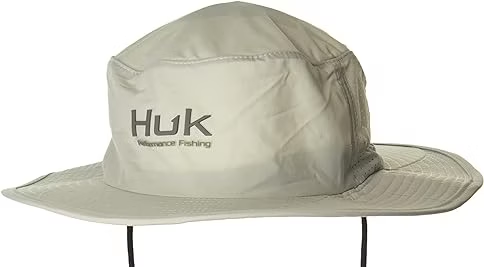
HUK Men’s Boonie, Wide Brim Fishing Hat
A lightweight and packable hat for stowing in your go-bag.
Check Price
If you make an online purchase using a link from this site, the vendor provides a small commission which I use to support the blog (at no extra cost to you). Thank you for your support!
5. Shirts
If you’re out admiring nature in warmer weather, you’ll probably have some skin exposed. When I’m bundled up on a Winter nature-walk, my only real concern is often protecting my eyes and face from the sun. But in the summer, my hands and forearms are also getting their fair share of UV rays. If I’m heading somewhere that I know might involve prolonged sun exposure, I might save on sunscreen by just bringing along a long-sleeved shirt. When the sun gets intense or I’m spending more time in open areas, I’ll throw that on over or under my short-sleeved shirt to block out UV radiation. Look for shirts made with breathable, quick-drying, non-cotton material to keep cool and dry.
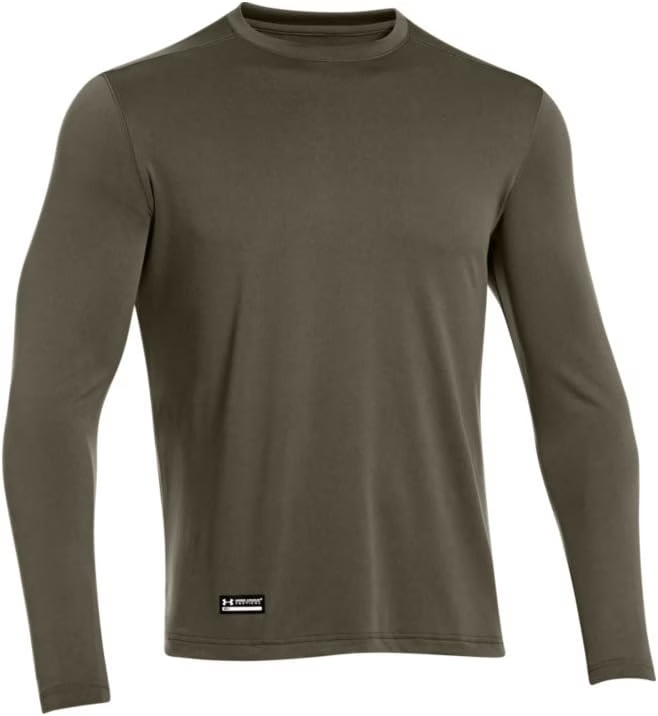
Under Armour Men’s Tactical Tech Long-Sleeve Shirt
Under Armour’s polyester long-sleeved shirts are a good compromise between price and durability and come in a variety of shapes and sizes.
Check Price
If you make an online purchase using a link from this site, the vendor provides a small commission which I use to support the blog (at no extra cost to you). Thank you for your support!
Pro tip: Long sleeved shirts are also an essential for avoiding bug bites. While bug spray can be helpful, it often contains chemical compounds that are dangerous to you or any wildlife with which you come into contact. Simply wearing a long-sleeved shirt, you can avoid a lot of insect bites without worrying about handling wildlife or contaminating any water bodies.
Read more: Why do bugs bite?
6. A Notebook or Nature Journal
Okay, here’s a major place where a naturalist’s go-bag deviates from other outdoor enthusiasts. If you’ve read any of my other Beginner Naturalist Tips, you’ll know that one of the most important tools in a naturalist toolbox is a notebook or nature journal to record observations, thoughts, and questions as you spend time in nature.
Read more: How to keep a nature journal
While teaching naturalist courses, I typically have students keep two types of notebooks:
- One or more smaller, portable, rainproof notebooks for jotting down quick thoughts, sketches, and observations.
- A larger notebook for longer observations or long-term logging like keeping track of hike locations or bird lists.
Naturalist Pro Tip: I typically only keep the first category in my go-bag, since large notebooks can be a bit cumbersome. If I am planning on a more chilled out and low-key nature experience with minimal movement (for example, a sit spot), then I will switch out the smaller notebook for my larger one.
Read More: How to do a sit spot
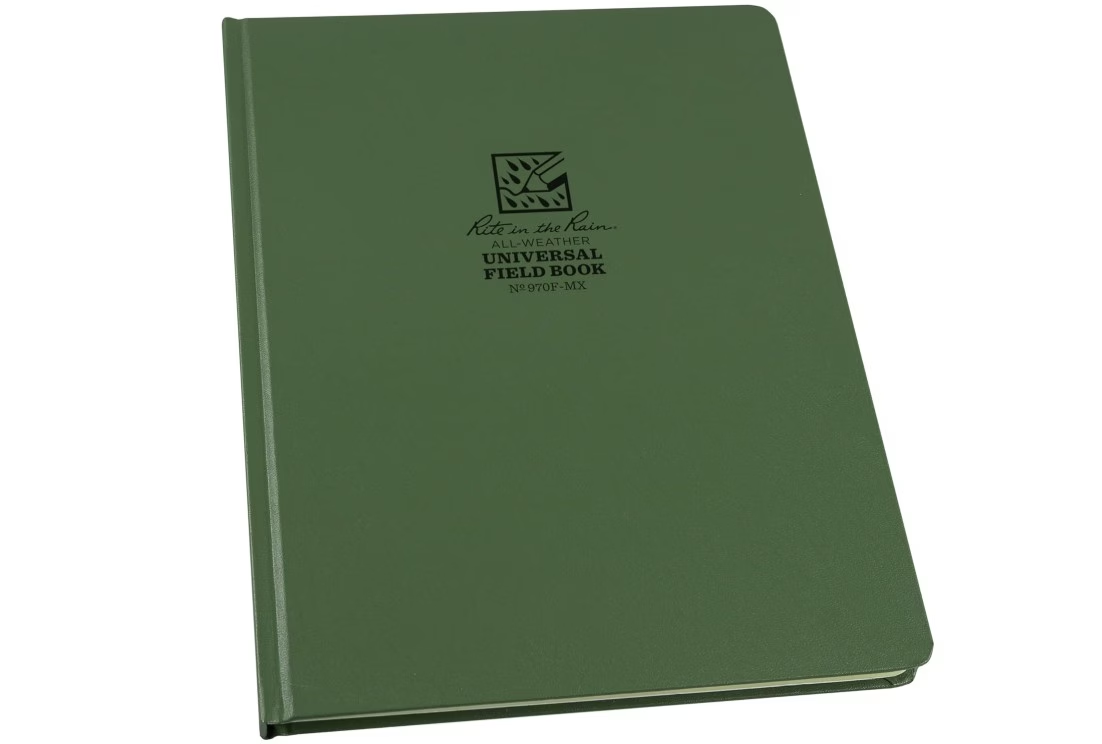
Rite in the Rain Weatherproof Hard Cover Notebook,
These larger notebooks are great for sit spots and other less-mobile nature experiences. I’ve carried mine hiking in the rainforest before without much trouble.
Check Price
If you make an online purchase using a link from this site, the vendor provides a small commission which I use to support the blog (at no extra cost to you). Thank you for your support!
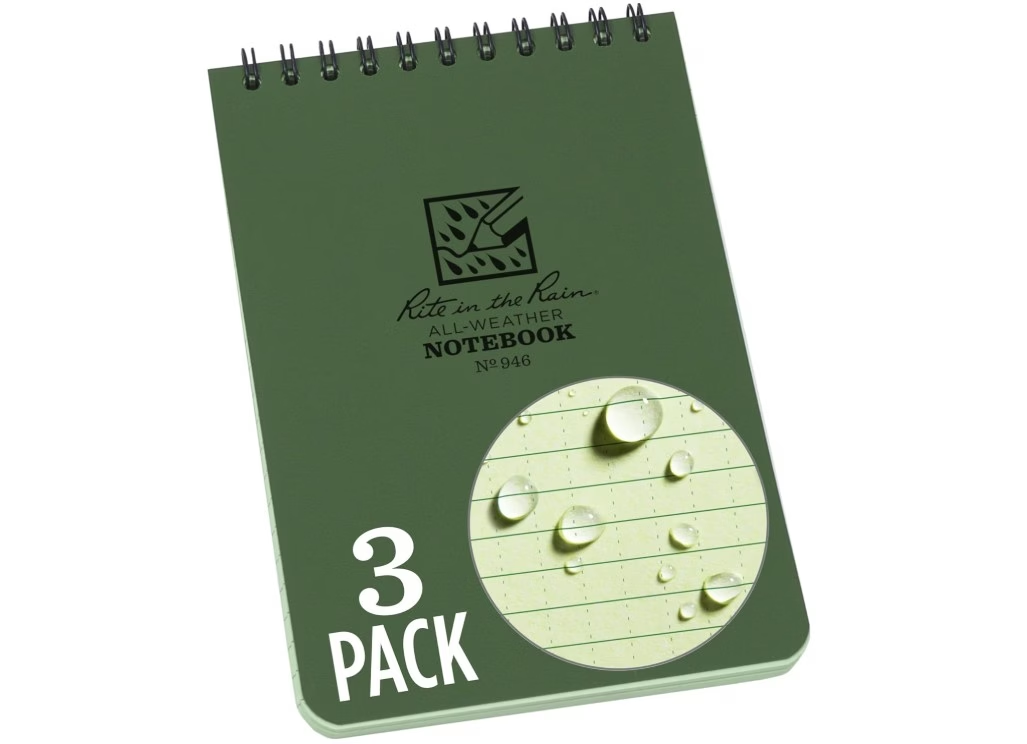
Rite In The Rain Weatherproof Top Spiral Notebook, 4″ x 6″
My favorite small, lightweight notebooks for shorter or more active nature experiences. Easily packable, waterproof, and they don’t take up much room.
Check Price
If you make an online purchase using a link from this site, the vendor provides a small commission which I use to support the blog (at no extra cost to you). Thank you for your support!
7. Waterproof or Windproof Layer
Even in hot, muggy climates, the combination of wind and rain can be dangerous if you’re exposed to the elements for long periods of time. Long hikes, multi-day backpacking or camping trips, or field excursions for nature study can all mean prolonged exposure that can pose a danger if not managed properly. If you’re covering a significant change in elevation during your nature experience, you might experience huge swings in temperature or weather that increase these risks.
I remember the first time I experienced this first-hand while climbing Mt. Washington in New Hampshire. I began my hike admiring forest birds while sweating profusely in dense, humid woods at the base of the mountain, but after rounding one ridge on my ascent I felt like I was standing in front of a full-blast air conditioner. It was nice for a few minutes, but soon I was walking around with chattering teeth in the middle of July! Luckily a wiser friend had packed a windbreaker and with her help I made it through the next couple hours of hiking with no problem.
Some sort of wind- or rain-proof layer is always a good idea for a naturalist go-bag, since they are typically light, extremely easy to pack, and can make a huge difference in insulating you from wind and rain. While these things are only a minor inconvenience in our day-to-day lives, if you’re out for many hours or days in a row, they can be dangerous. I have heard, for example, of people dying of hypothermia while climbing the same mountain I was on in the dead of summer.
Gulo’s Pick: I’m a fan of lightweight rain jackets that I can stuff in my go-bag and forget about until the need arises. A zipper is great so you can put them on and take them off easily, as is a stowable hood so you can protect your head if needed. Columbia offers a solid option that has worked well for my biologist colleagues and I.
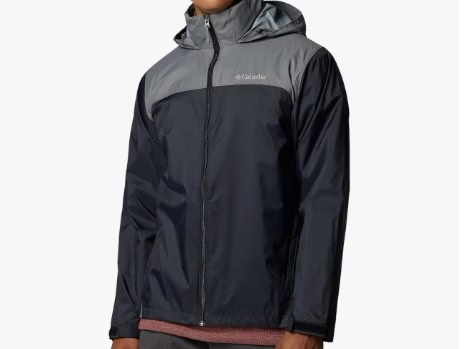
Columbia Men’s Glennaker Lake II Rain Jacket
A solid option for a zippable, hooded shell / rain layer.
Check Price
If you make an online purchase using a link from this site, the vendor provides a small commission which I use to support the blog (at no extra cost to you). Thank you for your support!
8. Snacks
Here’s a simple one: bring food along! While your caloric needs will vary based on your trip, it’s always worth having a bit of emergency food around just in case. I recommend bags of trail mix (homemade if you’re on a budget!) or protein/granola bars. If you’re hoping to pack some emergency food and forget it until you need it, look for squishable foods with a long shelf life. Store-brand nutrition bars are often a great way to go, but be way of bars with lots of chocolate (it will melt!) or a dry, crunchy texture (it will turn to dust!).
If you’re packing each time you go out, fruit are always a great option, but you’ll need to make sure you take food waste out with you.
Read more: Do’s and Don’ts for Responsibly Enjoying Nature
Optional But Good (Especially for nature nerds!)
While we’ve covered all the bare-bones essentials, there are plenty of other items that make great additions to a nature-lover’s go-bag, especially if you’re looking to do some in-depth nature study.
9. A Practical Knife
A knife is a good all-around tool for outdoor experiences, allowing you to make impromptu repairs on equipment, cut broken shoelaces, take samples of plants or mushrooms (NOTE: only where permitted and only done responsibly!), easily share an apple, and so-on. While there are lots of extremely fancy or unnecessarily macho knives on the market, a good naturalists’ knife has the following qualities:
- Sturdy steel for real use
- Foldable and stowable
- Small enough to not hog space
- Light enough to not weigh you down
- Easy to clean
Gulo’s Pick: While I was doing field research in Spain, a colleague gifted me a lovely, simple little folding knife from Opinel. I was quickly enamored with the knife, which I recognized because a botanist mentor of mine had used one while teaching me all about mountain plants in the French Alps the year before. It was a simple, sturdy, and no-frills knife that weighed very little and had a trustworthy locking mechanism. It’s been with me ever since!
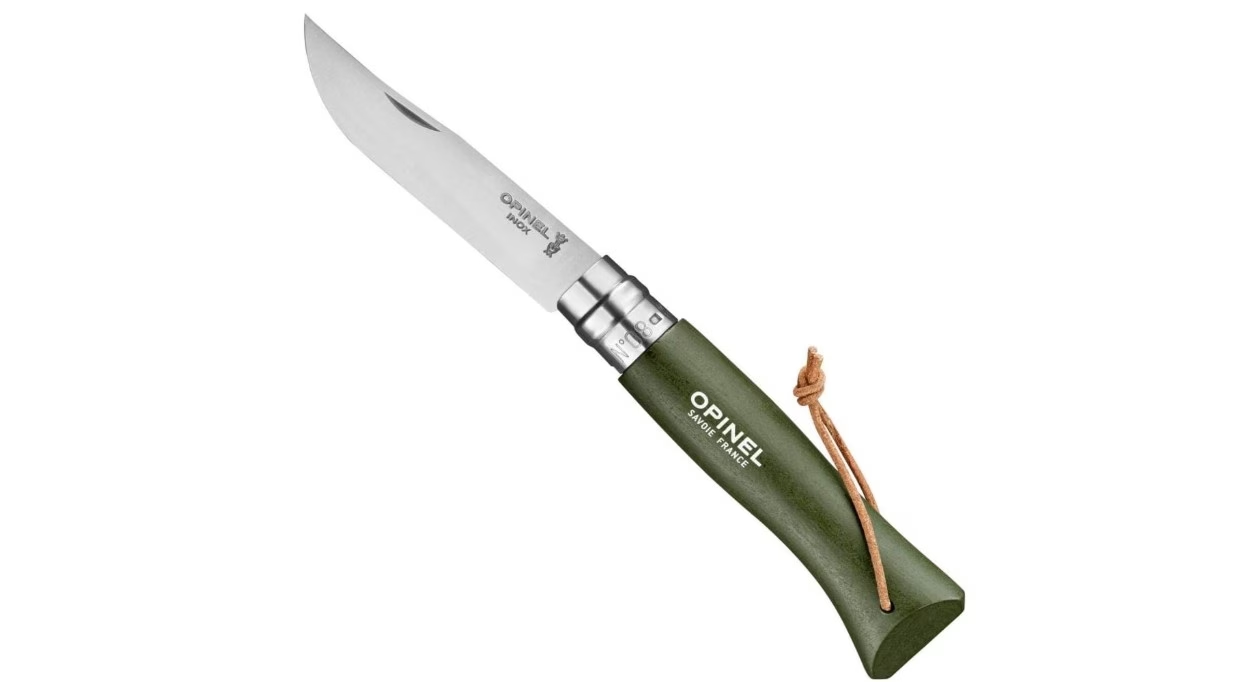
Opinel Colorama Series No. 8 – Stainless Steel
A standard Opinel knife with a leather carrying strap.
Check Price
If you make an online purchase using a link from this site, the vendor provides a small commission which I use to support the blog (at no extra cost to you). Thank you for your support!
Naturalist Pro Tip: Be very careful about checking your go-bag if you will do any flying! I have heard many horror stories about hikers and naturalists losing their favorite outdoor knife because they always kept it handy in their go-bag, and forgot it was there when they passed through airport security. Be mindful of this for your trips abroad!
10. Optics
An absolute essential for nature lovers, and a great investment for any outdoorsperson, optics help you see nature in ways your naked eye can’t. The two must-haves in getting a closer look at the natural world are binoculars and hand lenses or magnifying glasses; one for long range, the other for close up. I’ll never forget the sense of accomplishment and excitement I felt the first time I successfully spotted a bird with a good pair of binoculars—such a vivid look at a gorgeous animal, I remember muttering breathlessly that it was like watching the Discovery Channel.
Good optics will unlock whole worlds for you in the outdoors, letting you closely observe animal behaviors, identify trees, plants, or mushrooms from afar, and to explore the hidden workings of micro-worlds under logs, rocks, or blades of grass. These two items have come in handy for me enough times that I’ve written separate posts on how to use them both. Check them out below:
Read more: How to use binoculars
Read more: How to use a magnifying glass
Binoculars
Choosing a pair of binoculars is a big deal, not only because it is typically a substantial investment, but also because there are a lot of options. Besides that, binoculars are one of those rare items where you really tend to get what you pay for, so the choices you make are really important. You’ll want something that fits your budget and can also meet your technical needs (like magnification and weight) while also matching the style and format you like best. While I’ll share my recommendation for a starter pair of binoculars below, I also recommend checking out my (soon to be updated!) Guide to Choosing Binoculars.
Read more: 8 reasons why you should start birdwatching
Gulo’s Pick: While I’ve been through my fair share of binoculars, both my own and loaners from different biological stations and teams I’ve worked with, my recommendation to readers and fellow naturalists interested in their first pair has narrowed in on a couple of key parameters:
- Durability
- Viewshed (less magnification and more breadth is easier for beginning birders)
- Moderate price
- Reliable quality
I’ve found all of these in Vortex binoculars, which will likely be the next brand I buy from for my own work. They have a simple design that is sturdy and no-frills, avoiding complications and wear-and-tear that come from more complicated components. They have decent quality optics at a reasonable price (see the “standard” 8×42’s below), but for more serious naturalists they also have much higher quality models that go up quite a ways in price. 8×42 is a great magnification to start with, as it will give you a good image of an animal at some distance away, while not being too challenging if you’re still practicing the use of your binoculars. If you really know what you’re doing, shoot for higher magnification and higher-end models.
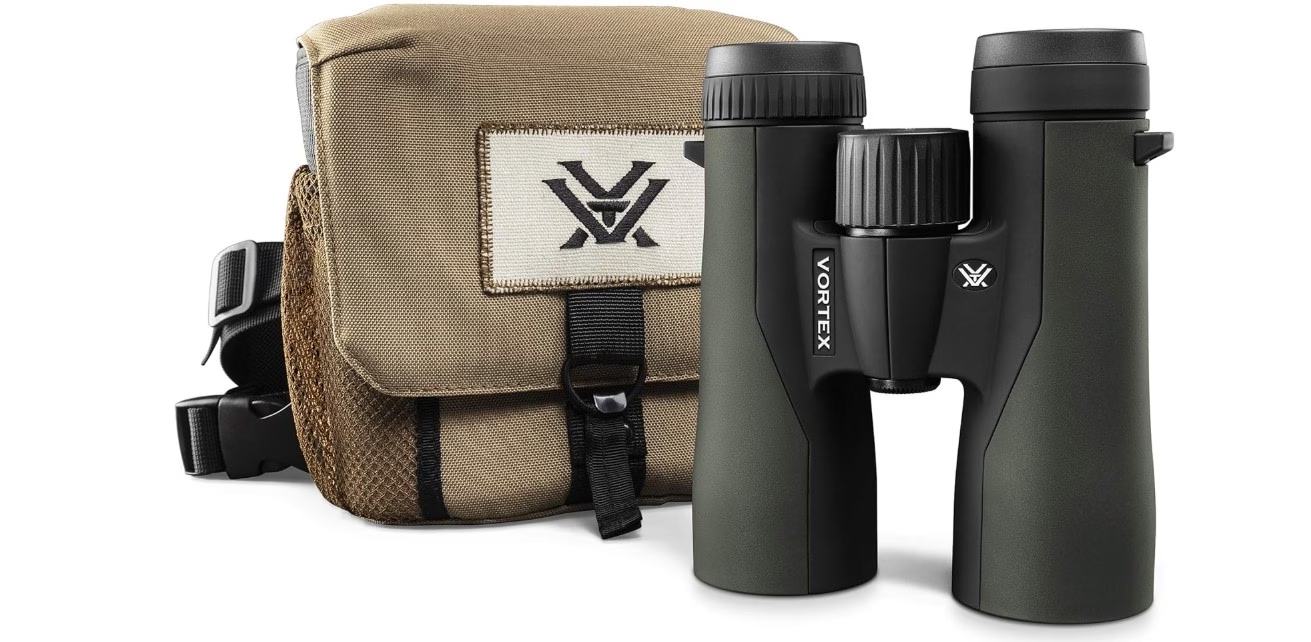
Vortex Optics Crossfire HD 8×42 Binoculars
My top binocular recommendation after lots of time in the field and years of conversations with fellow biologists. Vortex brand binoculars balance cost and quality well, and 8×42 are a great starter viewshed. More experienced or serious birdwatchers should shoot for higher-end optics and higher levels of zoom.
- 8x magnification & 42mm objective lenses,
- Roof prism design is valued for greater durability and a more compact size
- Non-slip rubber armor
- Fogproof internal seals
If you make an online purchase using a link from this site, the vendor provides a small commission which I use to support the blog (at no extra cost to you). Thank you for your support!
11. Hand Lens
Hand lenses are relatively cheaper to acquire but can make a huge difference for getting a new perspective on nature and seeing things you might otherwise not be able to make out. I’ve made fantastic personal nature discoveries while hunched over a clump of moss or peering into an anthill with a favorite hand lens, and never go on a nature outing without one. Unlike binoculars, they’re extremely light and packable, so you won’t ever need to worry about packing one, or even several of different magnifications and sizes.
Loupe magnifying glasses are especially durable since they can close up, and are a favorite among many botanists. My own botany mentors pressed me to purchase a triplet loupe (see below) and it’s been a constant companion ever since.
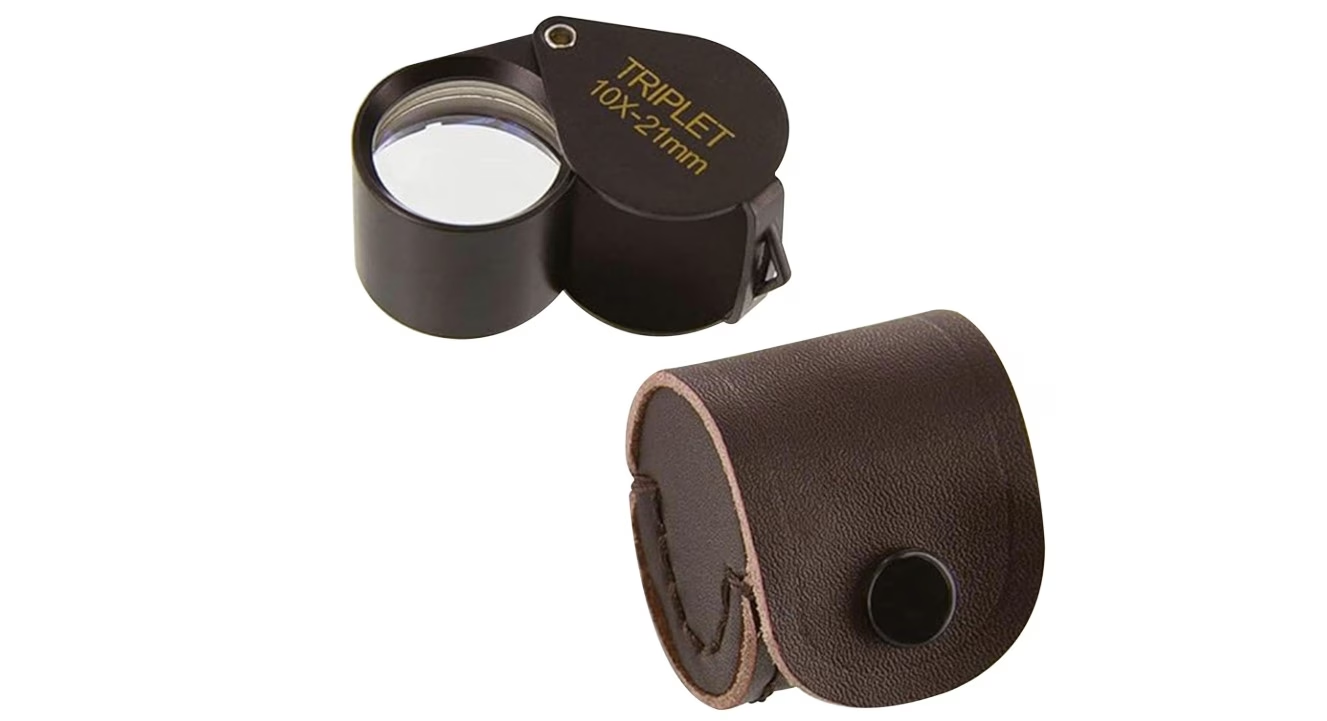
Ade Advanced Optics 10x21TB-A Triplet Professional Loupes
A solid loupe magnifying glass for getting a closer look at the smaller things in nature.
Check Price
If you make an online purchase using a link from this site, the vendor provides a small commission which I use to support the blog (at no extra cost to you). Thank you for your support!
Thanks for Reading!
Do you have any other gear recommendations to share with the community? Have you had good experiences with any of these products? We’d love to hear about it! Get in touch using the Contact page or connect with us on Social Media. If you’d like to Support the Blog or would like more Gulo in Nature directly to your inbox, check out our Newsletter. Until next time, get to know your natural world!

